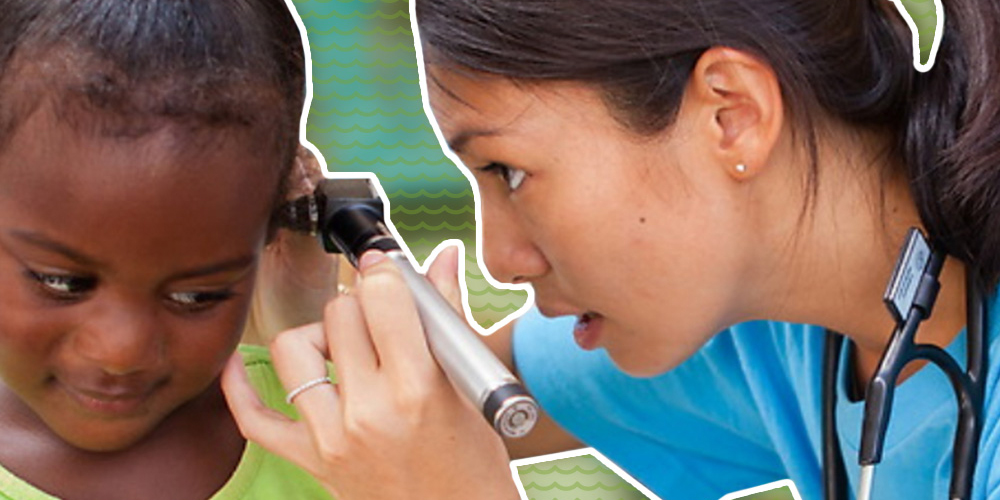You’ve wondered about daily life in the medical field because you’re interested in becoming a doctor. But you don’t want to become just any doctor—you want to be a pediatrician, working to help infants, children, and teens stay healthy.
If you’re looking for a sneak peek at what a day in the life of a pediatrician entails, you’ve come to the right place. We spoke with Dr. Don Williams, a practicing pediatrician, to learn what really goes into a day’s work. Keep reading to see what his typical schedule is like.
Pediatrician duties at a glance
Before reviewing a pediatrician’s daily routine, it’s helpful to understand what the roles and responsibilities of pediatricians are. According to the American Academy of Pediatrics (AAP), pediatricians address the mental, physical, and social health of children from birth through adolescence.
In addition to providing guidance related to healthy growth and development, pediatricians also diagnose and treat a wide range of illnesses. These physicians also work diligently to support families’ efforts to create a nurturing home environment that ultimately ensures children’s needs are being met.
The field of pediatrics has something for everyone. General pediatricians are responsible for health maintenance and prevention of illness, while others take on the role of treating disease as specialists. Pediatric specialist roles include:
- Allergy/immunology
- Audiology
- Cardiology
- Endocrinology
- Gastroenterology
- Neonatal
- Neurology
- Ophthalmology
- Pulmonology
- Radiology
- And more
A closer look at a day in the life of a pediatrician
Now that you have a basic understanding of the pediatrician job description, join us for a behind-the-scenes breakdown of a typical day at the hospital for Dr. Williams.
7:30am
Dr. Williams doesn’t just take care of children as a pediatrician—he’s also a father. He begins a typical day by dropping his daughter off at school. He then heads over to Dell Children’s Medical Center of Central Texas, where he works as a hospital-based pediatrician (also known as a hospitalist, a pediatrician that cares for children admitted to the hospital).
8:00am
Dr. Williams arrives at the hospital and his workday begins. He starts by talking with the physicians who took care of the pediatric patients overnight. This is called “signout,” as one doctor passes the torch of patient oversight to another.
The signout discussion provides Dr. Williams with updates about his patients. During this time there’s also usually an education conference, or patient care conference, with case managers. These care meetings help ensure everyone on the health care team is on the same page in regards to patient needs.
9:00am
After the initial updates, Dr. Williams starts his morning rounds. He checks in with patients and their families, and he spends time talking with them, examining them and creating care plans for them along with other relevant providers (e.g., nutritionists, social workers etc.).
Dr. Williams works with patients ranging from infants to teenagers. He says he frequently sees cases of bronchiolitis, asthma exacerbations, and an array of other illnesses. Sometimes he sees children with infections of the bones, joints, or urinary tract. He may also see children with genetic disorders or prematurity.
At this time, Dr. Williams also interacts with residents and medical students. They accompany him as he goes on his rounds, so his days are filled with teaching and supervising trainees in addition to direct patient care. Rounds typically last until around 11:30am.

Midday
Following rounds, Dr. Williams breaks for lunch. Sometimes he eats with colleagues in the doctors’ dining room, which is his chance to socialize with his peers. He also points out that there’s a fair amount of work that’s accomplished during the lunch period. Sometimes there are lunchtime educational conferences, and sometimes he and other physicians will end up doing informal conferencing.
1:00 pm
Dr. Williams’ afternoons start with finishing notes from his morning rounds. His residents will write up notes on their patients, and Dr. Williams reviews them for accuracy. He also contributes an addendum to support the residents’ writings.
Afternoons are also spent working in a teaching center. When students and new physicians need to be evaluated, Dr. Williams reviews their performance and provides feedback on a variety of tasks, such as how they are seeing their patients and how they are writing their notes.
Dr. Williams serves on a few committees at the hospital, including the Pediatric Leadership Board, which comprises elected physician representatives who set strategies for the facility. They examine how to best serve their young patients and maintain the hospital’s market share and financial health.
3:00 pm
“Sometime between 3 and 4pm, I meet with the person who is going to be covering the patients for the evening,” Dr. Williams says.
During this sign-out, he tells the incoming physician about the patients. He gets them up to speed with the patients’ cases and any concerns he may have. The physician coming in will work overnight at the hospital, which is staffed 24 hours a day. Dr. Williams explains that this is not always the case for pediatricians—they sometimes take calls from home.

4:30 pm
After sign-out, Dr. Williams heads home to his family, usually leaving the hospital sometime between 4 or 5pm. But sometimes, Dr. Williams is the one working the evening and overnight shift. In that case, his day is just beginning. Either way, he finds his career as a pediatrician fulfilling and rewarding.
“You hear a lot of stories about physicians finding their job to be a drag or not what they expected it to be, but I don’t feel that way,” Dr. Williams says. He thinks his role is one of the reasons he’s avoided burnout. “Working in pediatrics provides a lot of opportunities to have heartwarming interactions with kids. I think it keeps us from getting too jaded.”
All in a day’s work
Now that you have a taste of what a day in the life of a pediatrician is like, you can begin picturing yourself in this rewarding role. If you’re still passionate about pursuing this specialty, start planning your next steps.
Check out our article “How to Become a Pediatrician: A Step-by-Step Guide.”
Ready to start your medical school journey?
Are you considering St. George’s University Medical School? If you need any more convincing, just reach out to some graduates or current students. They’re happy to tell you what their experiences were like.
If you feel like SGU could be the right medical school for you, take the next step. Continue your research by visiting our request information page.

